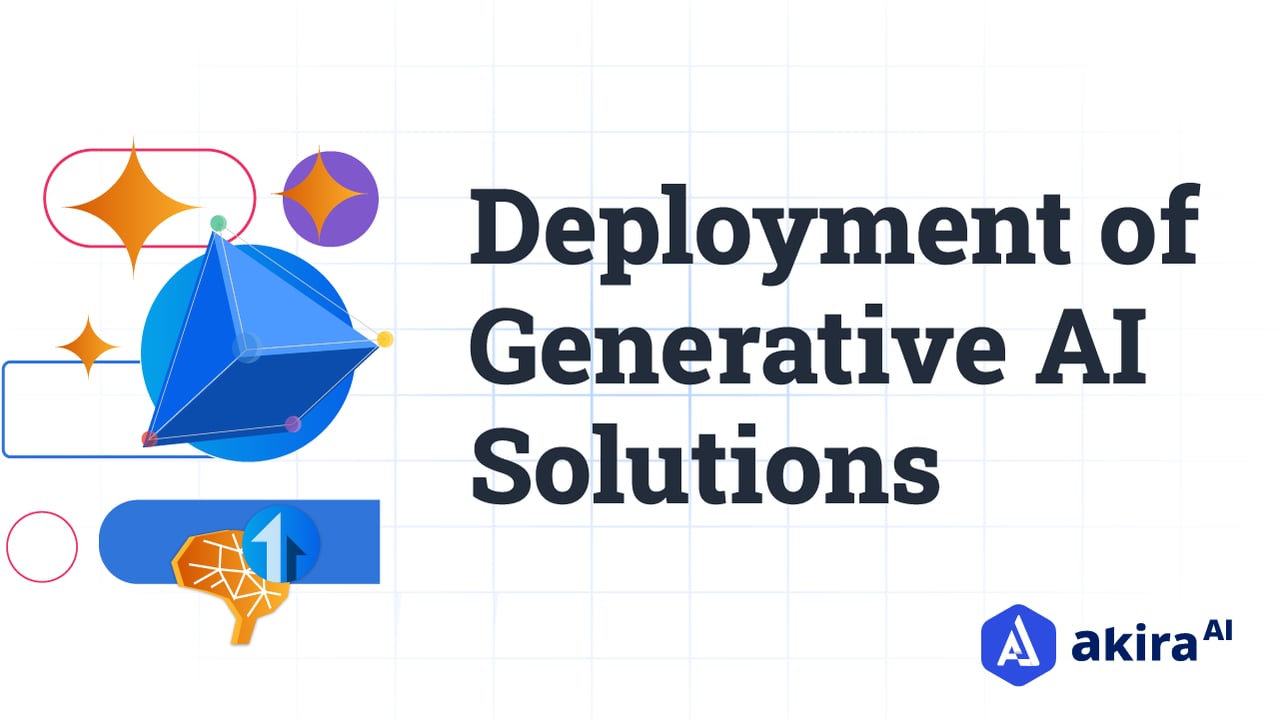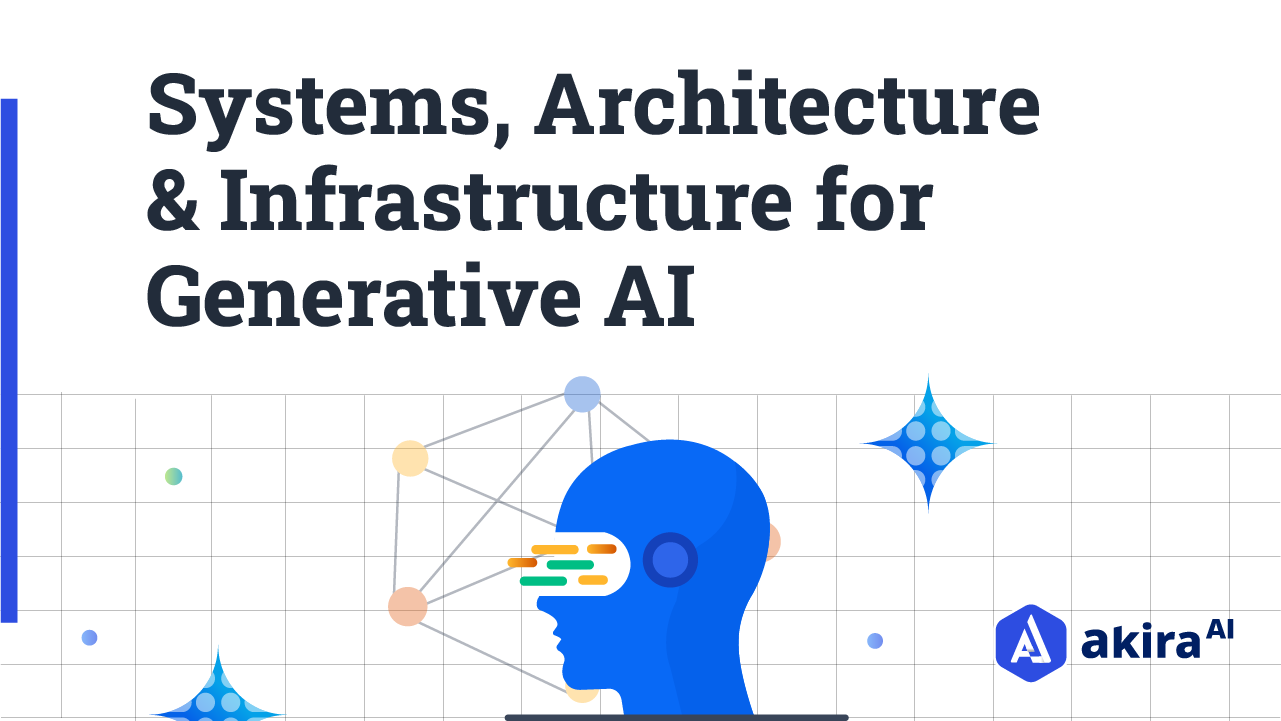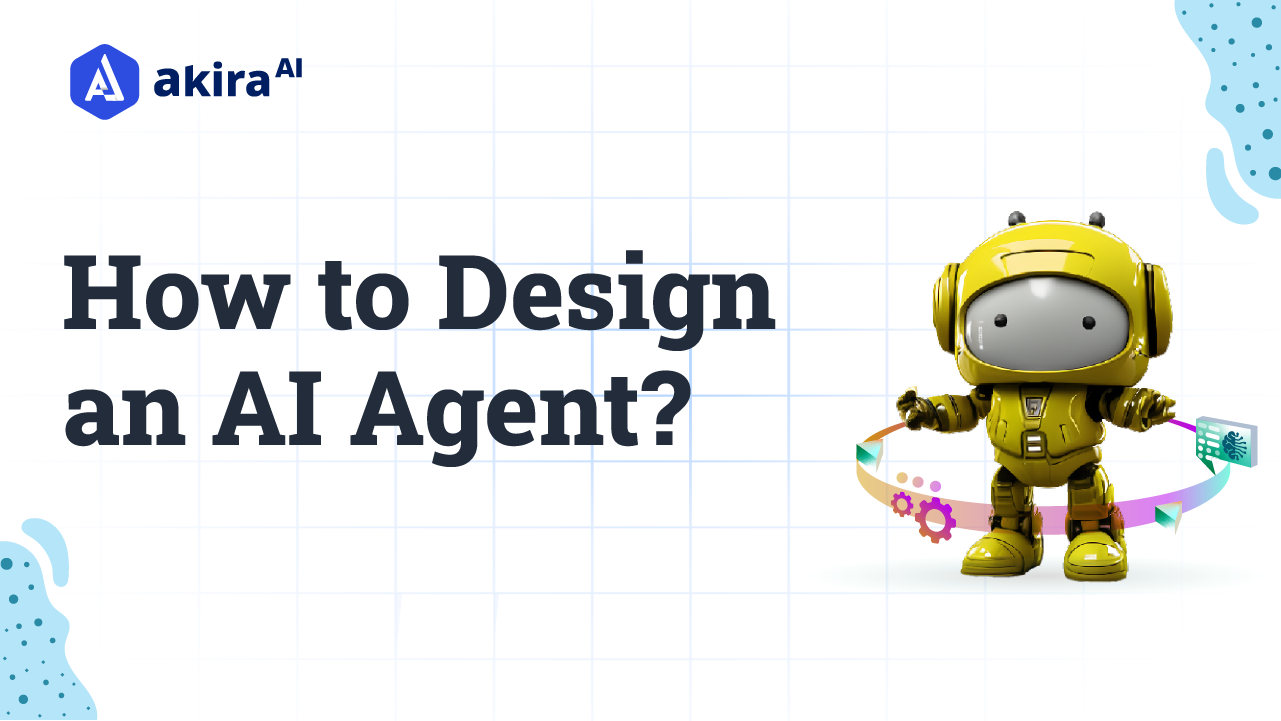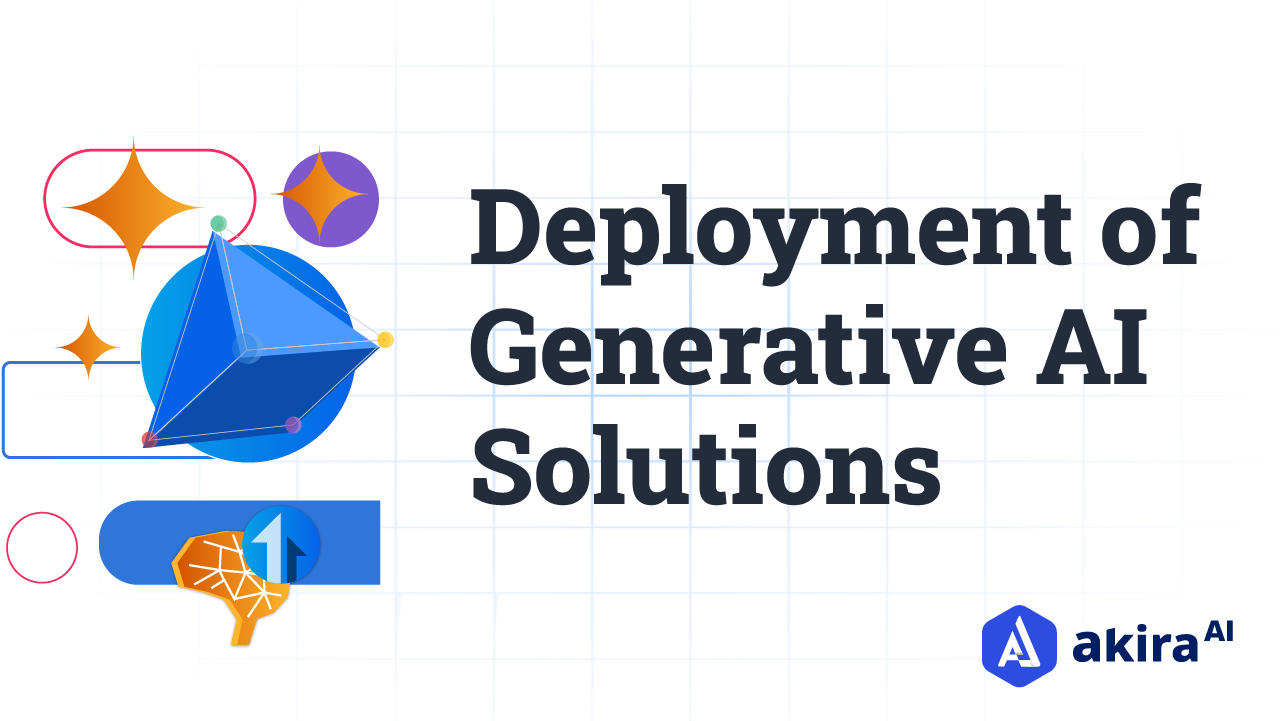Key Insights
Einstein SDR Agent autonomously engages with inbound leads, in natural language, to answer questions, handle objections, and book meetings for human sellers Einstein Sales Coach Agent autonomously engages in role-plays with sellers, simulating a buyer during discovery, pitch, or negotiation calls Accenture will leverage these agents to improve deal team effectiveness, scale to support more deals, and allow their people to focus their time and effort on the most complex deals

Introduction
Artificial intelligence (AI) has witnessed remarkable advancements in recent years, with generative AI solutions emerging as a frontrunner in the domain. These innovative technologies have shown tremendous potential across various industries, from creative content generation to healthcare diagnostics. However, the actual value of generative AI lies not only in its capabilities but also in its successful deployment. This blog will focus on the intricacies of deploying generative AI solutions, exploring the challenges and best practices that organizations must consider to harness the full potential of these cutting-edge technologies.
What is Generative AI?
Generative AI is artificial intelligence that generates content from datasets, be it text, videos, images, or sounds, closely resembling human-created output. Unlike traditional AI, which primarily relies on rules and predefined instructions, generative AI leverages deep learning algorithms, mainly variants of neural networks like GANs (Generative Adversarial Networks) and RNNs (Recurrent Neural Networks), to generate creative and often unpredictable outputs.
Applications of Generative AI
Before diving into deployment strategies, it's essential to appreciate the broad spectrum of applications Generative AI solutions can address. Some notable use cases include:
Video Game Design: Generative AI can assist in creating game environments, characters, and even game mechanics, reducing development time and costs while enhancing the gaming experience.
Drug Discovery: In pharmaceuticals, Generative AI can help identify potential drug candidates by simulating molecular structures and predicting their efficacy, accelerating the drug discovery.
Autonomous Vehicles: Self-driving cars use Generative AI to interpret sensor data, make real-time decisions, and navigate complex environments, increasing safety and efficiency on the road.
Natural Language Processing: Generative AI models can generate human-like text, making them invaluable for chatbots, virtual assistants, and automated customer support, improving user experiences.
Financial Modelling: In finance, Generative AI can analyze vast datasets to predict market trends, optimize investment portfolios, and develop trading strategies.
Fashion Design: Fashion designers leverage Generative AI to create clothing designs, patterns, and styles, providing innovative options for the fashion industry.
Environmental Conservation: Generative AI can help monitor and analyze environmental data, such as satellite imagery, to track deforestation, climate change, and wildlife populations, aiding conservation efforts.
Content Personalization: Online platforms utilize Generative AI to personalize content recommendations, enhancing user engagement and satisfaction.
Historical Restoration: Generative AI can restore and colorize old photos and videos, preserving historical records and bringing them to life for future generations.
Simulation and Training: Industries like aviation and healthcare use Generative AI for realistic simulations and training programs, improving the skills and preparedness of professionals.
Entertainment and Storytelling: Filmmakers and writers use Generative AI to develop plotlines, characters, and special effects, creating captivating stories and entertainment experiences.
Energy Optimization: Generative AI can optimize energy consumption in buildings and industrial processes, reducing costs and environmental impact.
These diverse applications showcase the versatility of Generative AI, which continues to evolve and find new uses across various industries. As technology advances, it's crucial to consider the ethical and societal implications while harnessing its potential for positive impact.
Deployment Challenges of Generative AI
Deploying Generative AI solutions is not without its challenges. Several hurdles must be overcome to ensure the technology integrates seamlessly into an organization's processes. Here are some of the critical deployment challenges:
Regulatory Compliance: Depending on the industry and jurisdiction, regulatory frameworks and legal requirements may govern the use of AI, including Generative AI. Ensuring compliance with these regulations can be complex and time-consuming.
Scalability: As organizations expand their use of Generative AI, the ability to scale the infrastructure and processes to meet growing demands becomes a significant challenge. This involves increasing computational resources and ensuring that the deployment can handle a higher workload effectively.
Bias and Fairness: Generative AI models can inadvertently perpetuate biases in the training data. Deployers must be vigilant in identifying and mitigating bias to ensure fair and equitable outcomes, especially in sensitive applications like hiring or lending.
User Acceptance: End-users and stakeholders may hesitate to trust or adopt Generative AI solutions, particularly if they do not understand how the technology works. Addressing user concerns and providing transparency can be critical for successful deployment.
Integration with Existing Systems: Many organizations have legacy systems and processes. Integrating Generative AI into these existing infrastructures can be challenging and may require custom development and extensive testing.
Data Privacy: Generative AI often involves handling sensitive or personal data. Data privacy and compliance with data protection regulations (such as GDPR) is essential to avoid legal and ethical issues.
Continuous Maintenance and Updates: AI models, including Generative AI, require ongoing maintenance, monitoring, and updates to remain effective and secure. Staying current with the latest advancements and potential vulnerabilities is an ongoing challenge.
Skill Shortages: There is a shortage of skilled professionals who can develop, deploy, and maintain Generative AI solutions. Organizations may struggle to find and retain the necessary talent to manage these deployments effectively.
Cost Management: The costs associated with Generative AI deployment can be significant, encompassing data acquisition, computational resources, talent, and ongoing maintenance. Managing these costs and ensuring a positive return on investment can be challenging.
Deploying Generative AI solutions involves a complex interplay of technical, ethical, legal, and organizational factors. Successful deployment requires careful planning, continuous monitoring, and a commitment to addressing potential challenges.
Deployment and its Best Practices
To overcome these challenges and successfully deploy generative AI solutions, organizations can follow these best practices:
Data Management: Invest in data collection, cleaning, and curation processes to ensure a reliable dataset for model training. Pay attention to data privacy and security.
Ethical Guidelines: Develop guidelines and policies for Generative AI use within your organization. Foster responsible AI deployment practices.
Scalable Infrastructure: Ensure that your infrastructure can scale to accommodate the computational requirements of Generative AI, potentially using cloud resources.
Interpretability and Explainability: Use interpretable AI models and tools to understand the reasoning behind Generative AI outputs, especially in critical applications.
Security Protocols: Implement robust security measures to protect Generative AI models from adversarial attacks and unauthorized access.
User Education: Educate end-users and stakeholders about the capabilities and limitations of Generative AI to manage expectations effectively.
Steps for Deploying Generative AI
Define Your Objectives and Use Case
The first crucial step in deploying Generative AI is to define your objectives and identify the specific use case. What problem are you trying to solve, and how can Generative AI address it? Understanding your goals and use cases will guide the deployment process and help you measure success.
Data Collection and Preparation
Generative AI models require high-quality data for training. Gather a diverse and representative dataset related to your use case. Ensure the data is cleaned, labeled, and pre-processed to remove noise and inconsistencies. Pay attention to data privacy and compliance with relevant regulations.
Choose or Develop the Right Model
Select an appropriate Generative AI model for your use case. You can choose from pre-trained models like GPT-3 or develop a custom model based on your requirements. Consider factors such as model size, architecture, and computational resources when choosing.
Model Training
Training a Generative AI model is a resource-intensive process. You'll need a robust computing infrastructure to train the model efficiently. Training can take hours to weeks depending on your dataset and model complexity. It's crucial to fine-tune the model during this phase to optimize its performance for your specific use case.
Testing and Validation
After training the model, thoroughly test it to ensure it meets your objectives. Validate the outputs against a set of predefined criteria and benchmarks. This step helps identify any issues or biases in the model's production that must be addressed before deployment.
Deployment Infrastructure
Prepare the deployment infrastructure. This includes setting up servers, cloud resources, or edge devices to run the Generative AI model. Consider scalability and resource management to handle varying workloads effectively.
Security and Compliance
Implement robust security measures to protect your Generative AI solution from threats and vulnerabilities. Ensure the deployment complies with data privacy regulations and ethical guidelines, especially if sensitive data is involved.
Monitoring and Maintenance
Once deployed, continuously monitor the Generative AI solution's performance. Implement monitoring tools and automated processes to detect issues, track usage, and gather user feedback. Regularly update the model and infrastructure to maintain its effectiveness and security.
User Training and Support
Provide user training and support to ensure your team or end-users can utilize the Generative AI solution effectively. Offer resources and assistance for troubleshooting and addressing any challenges that may arise.
Evaluate and Iterate
Periodically evaluate the Generative AI solution's impact on your objectives. Collect data on its performance, user satisfaction, and ROI. Use this information to identify areas for improvement and iterate on the deployment strategy.
Conclusion
Generative AI solutions represent a transformative force across industries, unlocking new possibilities for creativity, efficiency, and problem-solving. However, successful deployment requires a thoughtful approach, addressing data, ethics, infrastructure, and security challenges. By following best practices and learning from real-world case studies, organizations can harness the full potential of Generative AI, bridging the gap between innovation and practicality and ushering in a new era of AI-powered applications. As the technology evolves, those who adapt and deploy Generative AI effectively will undoubtedly reap the rewards of enhanced capabilities and competitiveness in their respective domains.


